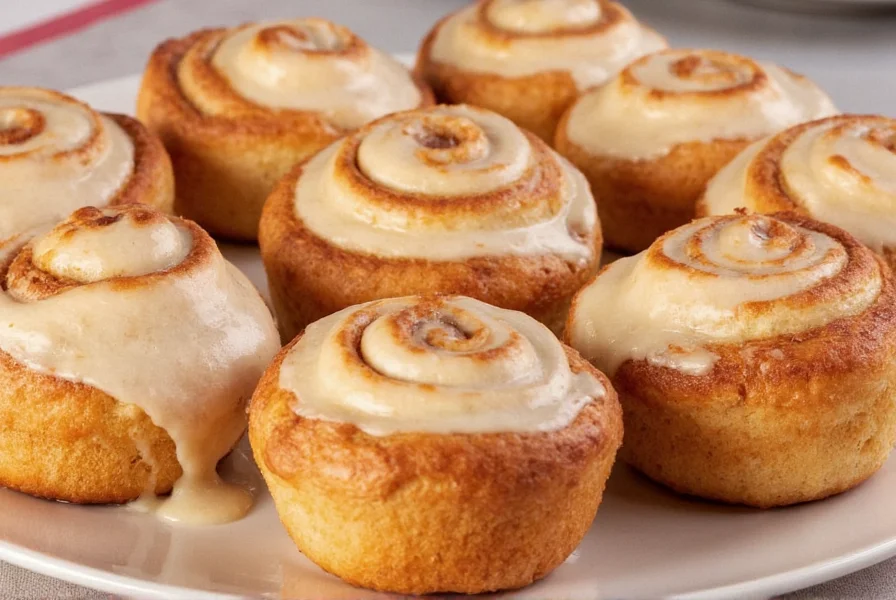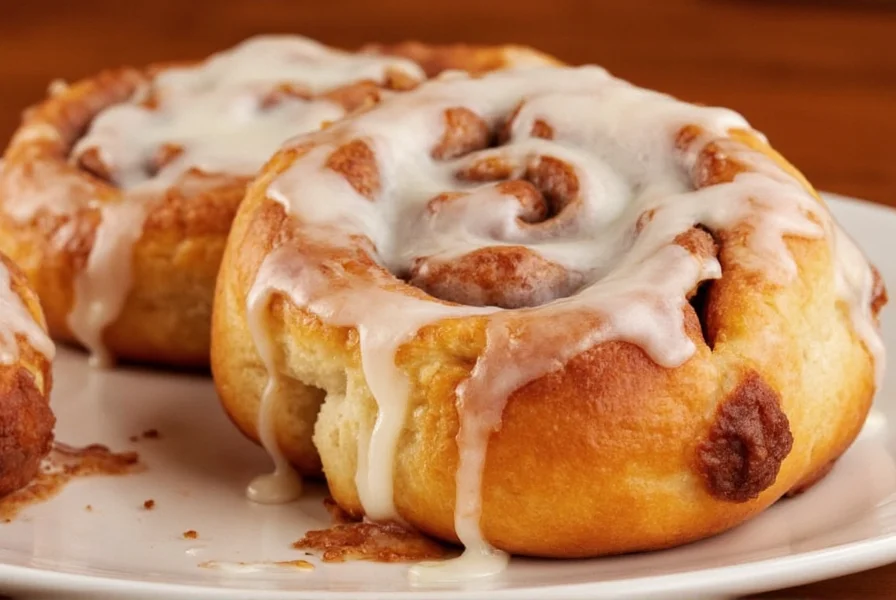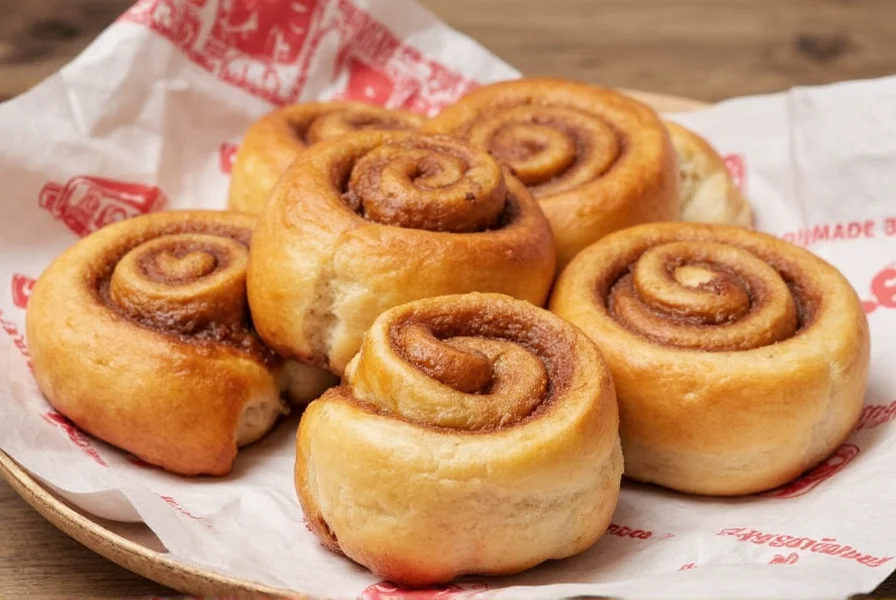Cinnabon's iconic cinnamon rolls have become a cultural phenomenon since their introduction in 1985. What sets these pastries apart isn't just their sweet aroma that fills shopping malls worldwide, but a carefully crafted recipe developed to deliver a consistent, high-quality experience across all locations. The secret lies primarily in their exclusive cinnamon blend and preparation method rather than any single mysterious ingredient.
The Makara Cinnamon Difference
At the heart of Cinnabon's signature taste is Makara cinnamon, a specific variety of Ceylon cinnamon (Cinnamomum burmannii) grown exclusively in Indonesia. Unlike the more common Cassia cinnamon found in most grocery stores, Makara has a higher oil content (2-3% compared to 1-2%) which translates to a more intense, complex flavor profile with subtle sweet notes rather than sharp heat.
"Makara cinnamon contains approximately 60-70% cinnamaldehyde, the compound responsible for cinnamon's characteristic flavor, compared to 80-90% in Cassia varieties," explains Dr. Elena Rodriguez, a food scientist specializing in spice chemistry. "This lower concentration creates a more nuanced, less aggressive cinnamon experience that works perfectly in sweet applications like cinnamon rolls."

Recipe Components and Preparation Process
While Cinnabon guards its exact recipe closely, food analysts have identified key components that contribute to the distinctive texture and flavor:
- Dough composition: A enriched yeast dough with butter, eggs, and milk that creates a soft, slightly chewy texture
- Filling: The proprietary Makara cinnamon blend combined with sugar and other flavorings
- Frosting: A cream cheese-based icing applied immediately after baking
- Baking process: Rolls are baked in specialized pans that create the signature spiral shape
Unlike many commercial bakeries that freeze their products, Cinnabon locations bake their cinnamon rolls throughout the day in small batches. This "fresh-baked" approach significantly impacts both texture and aroma, creating what marketing experts call "the Cinnabon effect"—the irresistible scent that draws customers from across shopping centers.
| Characteristic | Cinnabon Cinnamon Rolls | Typical Homemade Version |
|---|---|---|
| Cinnamon Type | Makara (Indonesian Ceylon) | Cassia (common grocery store) |
| Baking Frequency | Multiple times daily | Single batch |
| Sugar Content | No high-fructose corn syrup | Often contains corn syrup |
| Texture Profile | Consistent across locations | Varies by baker |
| Frosting Application | Immediately after baking | After cooling |
Why Cinnabon Cinnamon Rolls Became a Cultural Icon
The success of Cinnabon cinnamon rolls extends beyond just taste. Several factors contributed to their widespread popularity:
First, the strategic placement of Cinnabon kiosks in high-traffic shopping malls created what psychologists call "sensory marketing"—the aroma of freshly baked rolls serves as a powerful attractant. Research shows that smell is the sense most closely linked to memory, making the cinnamon scent particularly effective at creating positive associations.
Second, Cinnabon maintained remarkable consistency across locations. Whether you're in Tokyo, Paris, or New York, the cinnamon roll experience remains virtually identical. This reliability built trust with consumers who knew exactly what to expect.
Third, the product occupies a unique space between indulgence and accessibility. At approximately 880 calories per roll, it's positioned as a special treat rather than an everyday item, making the experience feel more special.

Authenticity and Availability
True Cinnabon cinnamon rolls can only be purchased at official Cinnabon locations or through their licensed partners. While grocery stores sell "Cinnabon" branded products, these are typically manufactured by other companies under license and don't match the fresh-baked quality of in-store offerings.
For those seeking the authentic experience, Cinnabon operates over 1,300 locations worldwide, with the highest concentration in the United States. The company has expanded beyond traditional mall locations to airports, casinos, and standalone stores, making their signature product more accessible than ever while maintaining the same recipe standards.
Nutritional Profile and Dietary Considerations
A standard Classic Cinnabon Cinnamon Roll contains approximately 880 calories, 40g fat (18g saturated), 123g carbohydrates, and 73g sugar. While undeniably an indulgent treat, Cinnabon has introduced several modifications to address evolving consumer preferences:
- Elimination of high-fructose corn syrup from their recipe
- Introduction of reduced-sugar options in select markets
- Gluten-free alternatives in some locations
- Trans-fat free formulation since 2008
It's worth noting that the nutritional profile can vary slightly based on location and specific preparation methods, but the core recipe remains consistent across all official Cinnabon outlets.
Common Misconceptions About Cinnabon Cinnamon Rolls
Several myths have developed around Cinnabon's signature product over the years. Let's clarify some of the most persistent ones:
Myth: Cinnabon uses a special "secret ingredient" beyond the cinnamon blend.
Reality: While the exact proportions are proprietary, food analysis shows the ingredients are standard baking components without any mysterious additives.
Myth: The rolls contain unusually high amounts of sugar compared to similar products.
Reality: At 73g of sugar, they're comparable to other premium cinnamon rolls, with the difference being in the quality and type of sweeteners used.
Myth: The distinctive flavor comes primarily from the frosting.
Reality: The cinnamon-sugar filling accounts for approximately 70% of the flavor profile, with the frosting providing complementary notes.
Experiencing Authentic Cinnabon Cinnamon Rolls
For the optimal experience, experts recommend consuming Cinnabon cinnamon rolls within 15-20 minutes of baking when the texture is at its peak. The cream cheese frosting should be slightly melted into the warm roll, creating a perfect balance of temperatures and textures.
While many enjoy them as a standalone treat, pairing options can enhance the experience:
- Coffee: A medium-roast coffee balances the sweetness
- Tea: Earl Grey provides a complementary citrus note
- Milk: Whole milk creates a comforting combination
Understanding what makes Cinnabon cinnamon rolls special goes beyond just the ingredients—it's the combination of proprietary cinnamon, consistent preparation methods, and the sensory experience that has made them a beloved treat for nearly four decades.
Frequently Asked Questions
What makes Cinnabon cinnamon rolls different from other brands?
Cinnabon cinnamon rolls use a proprietary Makara cinnamon variety from Indonesia with higher oil content than standard grocery store cinnamon. They contain no high-fructose corn syrup, are baked fresh throughout the day at retail locations, and follow a consistent recipe across all official outlets. The specific preparation method, including immediate frosting application after baking, creates their distinctive texture and flavor profile.
Does Cinnabon use real cinnamon in their rolls?
Yes, Cinnabon uses a specific variety of real cinnamon called Makara, which is a type of Ceylon cinnamon (Cinnamomum burmannii) grown exclusively in Indonesia. This high-oil cinnamon variety (2-3% oil content) provides a more complex, sweeter flavor profile compared to the more common Cassia cinnamon found in most grocery stores.
Are Cinnabon cinnamon rolls made fresh daily?
Cinnabon locations bake their cinnamon rolls multiple times throughout each business day in small batches, rather than baking everything at once. This fresh-baked approach ensures customers receive rolls at their peak quality and creates the distinctive aroma that has become synonymous with Cinnabon stores. Unlike many commercial bakeries, Cinnabon does not freeze their products before sale.
What are the main ingredients in Cinnabon cinnamon rolls?
The main ingredients include enriched wheat flour, sugar, water, palm oil, yeast, salt, eggs, and the proprietary Makara cinnamon blend. The cream cheese frosting contains sugar, palm oil, cream cheese (milk, cheese cultures, salt, enzymes), and other standard frosting ingredients. Notably, Cinnabon's recipe does not contain high-fructose corn syrup, which distinguishes it from many commercial bakery products.
How do Cinnabon cinnamon rolls compare nutritionally to homemade versions?
A standard Cinnabon Classic Cinnamon Roll contains approximately 880 calories, 40g fat (18g saturated), 123g carbohydrates, and 73g sugar. This is comparable to many premium homemade versions, though the specific cinnamon variety and preparation method affect the nutritional profile. The primary difference lies in ingredient quality—Cinnabon uses a specific high-oil cinnamon and avoids high-fructose corn syrup, while homemade versions often use standard grocery store cinnamon and may include corn syrup.











 浙公网安备
33010002000092号
浙公网安备
33010002000092号 浙B2-20120091-4
浙B2-20120091-4